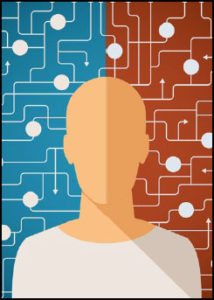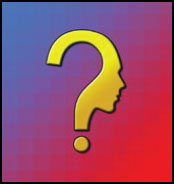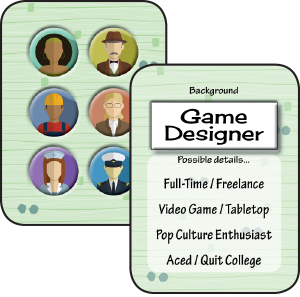The Turing Test
A Social Deduction Game of Secrets and Suspicion by Jay Little
9-15 Players / 30 to 45 Minutes / Ages 13+

In 1950, Alan Turing developed the Turing Test, a protocol to distinguish between a person and a machine programmed to behave and respond like a person. Today a new, more sophisticated Artificial Intelligence (AI) has been developed, and its programmer is hosting a dinner party to put this AI to the ultimate test—can they operate in a large social setting without being discovered? By the end of the party, the guests must determine which guests are human and which guests are actually artificial intelligence.
Follow the Turing Test on BoardGameGeek.com
Download the Print & Play Edition now
The Turing Test is a fun, social game for large groups. The game accommodates 9 to 15 players with the same 30 to 45 minute time frame regardless of how many people are playing. The Turing Test is part socializing, part storytelling, and part sleuthing. Over the course of the game, you and your friends will engage in interesting conversations while exhibiting certain traits and behaviors. Over the course of the game you will start to build suspicion about one or more other players and whether their behaviors lead you to believe they are a human or an AI. Meanwhile, the other players are trying to determine the same thing about you… are you just a quirky human or an advanced AI that has alarmingly human traits?
Gameplay Overview
The Turing Test is played in two halves. In the first half of the game, players receive most—but not all—of the information on their role in the game through Background Cards and Trait Cards. Then they have an opportunity to get up, move around, and use Question Cards to initiate conversations with their fellow players to observe their behaviors. Question Cards. At the end of the first half of play, the players re-convene to compare notes and assign a Hunch Token to indicate who they think might be an Artificial Intelligence.
 In the second half of the game, players receive one final Trait Card, new Question Cards, and have another opportunity to have discussions with the other players, question each other, and observe guests’ behavior. Then, the players convene one last time, discuss and argue their cases for which guests they believe are Artificial Intelligence, and assign Suspicion Tokens.
In the second half of the game, players receive one final Trait Card, new Question Cards, and have another opportunity to have discussions with the other players, question each other, and observe guests’ behavior. Then, the players convene one last time, discuss and argue their cases for which guests they believe are Artificial Intelligence, and assign Suspicion Tokens.
Finally, everyone reveals the Hunch and Suspicion Tokens given to them by the other players. The players who drew the most suspicion reveal their Trait Cards to see if they are human or AI. If they are AI, the programmer failed. If they are human, the programmer succeeded as his AI passed the Turing Test!
Student Developed & Tested
 The Turing Test was first created in the fall of 2015 as a design challenge to come up with a simple, engaging game that an entire classroom full of college students could play at the same time. It was first designed as an icebreaker so the students could get to know each other, but was such a big hit that further development was warranted. Developing the game became part of the curriculum and classwork for a special winter course called Board Game Production & Processes at University of Wisconsin—Stout in Menomonie, Wisconsin.
The Turing Test was first created in the fall of 2015 as a design challenge to come up with a simple, engaging game that an entire classroom full of college students could play at the same time. It was first designed as an icebreaker so the students could get to know each other, but was such a big hit that further development was warranted. Developing the game became part of the curriculum and classwork for a special winter course called Board Game Production & Processes at University of Wisconsin—Stout in Menomonie, Wisconsin.
This three week board game course is taught by award-winning game designer Jay Little and gives students an opportunity to learn about game development and production through hands-on experience and insights provided by a variety of people from every cross-section of the hobby gaming industry. Special thanks go to the students of the inaugural class of Winter 2016 for helping develop and playtest the Turing Test over the course of the semester.
You can download a Print and Play version of the Turing Test and try it out for yourself.